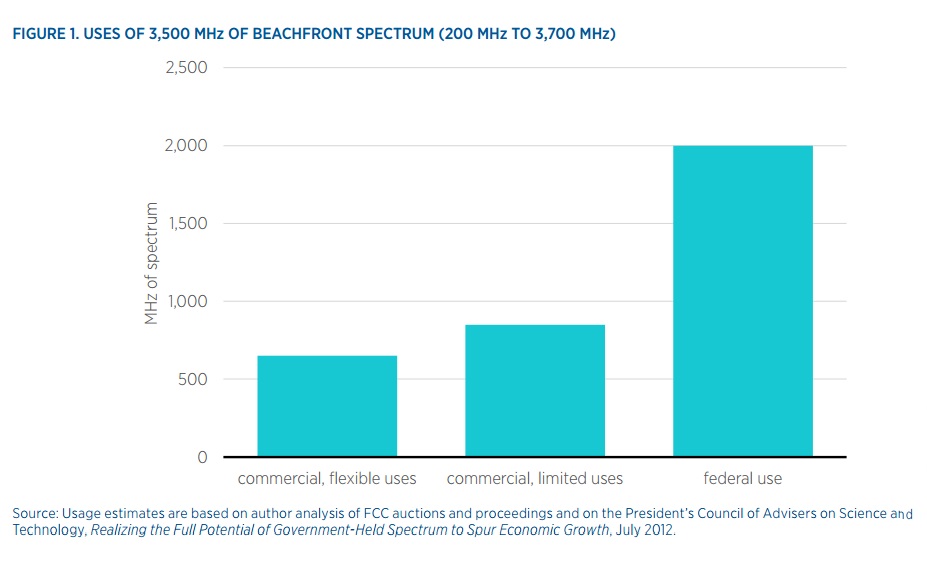The Wall Street Journal reported yesterday that the White House is crafting a plan for $1 trillion in infrastructure investment. I was intrigued to learn that President Trump “inquired about the possibility of auctioning the broadcast spectrum to wireless carriers” to help fund the programs. Spectrum sales are the rare win-win-win: they stimulate infrastructure investment (cell towers, fiber networks, devices), provide new wireless services and lower prices to consumers, and generate billions in revenue for the federal government.
Broadcast TV spectrum is good place to look for revenue but the White House should also look at federal agencies, who possess about ten times what broadcasters hold.
Large portions of spectrum are underused or misallocated because of decades of command-and-control policies. Auctioning spectrum for flexible uses, on the other hand, is a free-market policy that is often lucrative for the federal government. Since 1993, when Congress authorized spectrum auctions, wireless carriers and tech companies have spent somewhere around $120 billion for about 430 MHz of flexible-use spectrum, and the lion’s share of revenue was deposited in the US Treasury.
A few weeks ago, the FCC completed the $19 billion sale of broadcast TV spectrum, the so-called incentive auction. Despite underwhelming many telecom experts, this was the third largest US spectrum auction ever in terms of revenue and will transfer a respectable 70 MHz from restricted (broadcast TV) use to flexible use.
The remaining broadcast TV spectrum that President Trump is interested in totals about 210 MHz. But even more spectrum is under the President’s nose.
As Obama’s Council of Advisors on Science and Technology pointed out in 2012, federal agencies possess around 2,000 MHz of “beachfront” (sub-3.7 GHz) spectrum. I charted various spectrum uses in a December 2016 Mercatus policy brief.

This government spectrum is very valuable if portions can be cleared of federal users. Federal spectrum was part of the frequencies the FCC auctioned in 2006 and 2015, and the slivers of federal spectrum (around 70 MHz of the federal total) sold for around $27 billion combined.
The Department of Commerce has been analyzing which federal spectrum bands could be used commercially and the Mobile Now Act, a pending bill in Congress, proposes more sales of federal spectrum. These policies have moved slowly (and the vague language about unlicensed spectrum in the Mobile Now bill has problems) but the Trump administration has a chance to expedite spectrum reallocation processes and sell more federal spectrum to commercial users.

 The Technology Liberation Front is the tech policy blog dedicated to keeping politicians' hands off the 'net and everything else related to technology.
The Technology Liberation Front is the tech policy blog dedicated to keeping politicians' hands off the 'net and everything else related to technology.